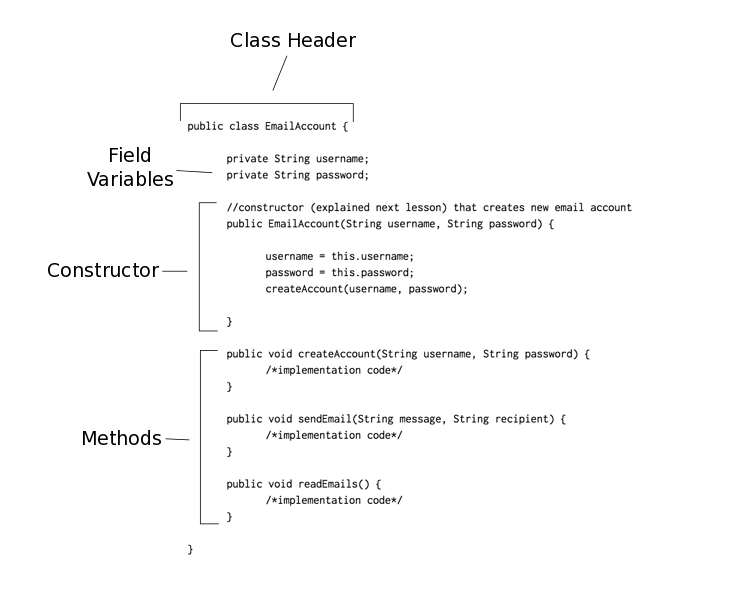| Vocab Bar | |
|---|---|
| Class | A software "blueprint" that describes the data and properties of a type of variable. |
| Object | A single instance of a class – it contains the class’s different properties. |
A class is the overall template that includes everything that describes a specific type of variable. Classes consist of a collection of similar methods and variables that together describe the various behaviors of some new thing. An object is a single instance of that class, and contains the class’s various properties/behaviors (which are variables and methods). The following image is an analogy for a class and its instances.

A class and its instances. Source
As you can see from the above image, a class is the blueprint used to create new objects, which can then be used for a variety of different tasks. Objects, especially their differences with primitives, will be covered in more depth in lesson #31 (Objects).
Although you have already been using classes, this lesson will go more in-depth on what makes a class and how a class is used. For example, the statement Math.abs(-2) is a method inside of the Math class. To better understand the concept of classes, let’s look at a new example. Below is a rudimentary class that represents someone’s email account.
public class EmailAccount {
private String username;
private String password;
// constructor (explained next lesson) that creates new email account
public EmailAccount(String username, String password) {
this.username = username;
this.password = this.password;
createAccount(username, password);
}
public void createAccount(String username, String password) {
/* implementation code */
}
public void sendEmail(String message, String recipient) {
/* implementation code */
}
public void readEmails() {
/* implementation code */
}
}
The above class demonstrates the basic syntax of the class. Here is an image dividing the above class into its main sections:

The class header consists of an access modifier (public/private), the keyword class, and the class name. The class name is structured using CamelCasing, but where the first letter is capitalized (as opposed to lowercase in methods/variables). In the next lesson, we’ll explain the use of fields, constructors, and creating instances of classes.
Lesson Quiz
1. What is a class?
2. What are classes used for?
Written by Chris Elliott
Notice any mistakes? Please email us at learn@teamscode.com so that we can fix any inaccuracies.